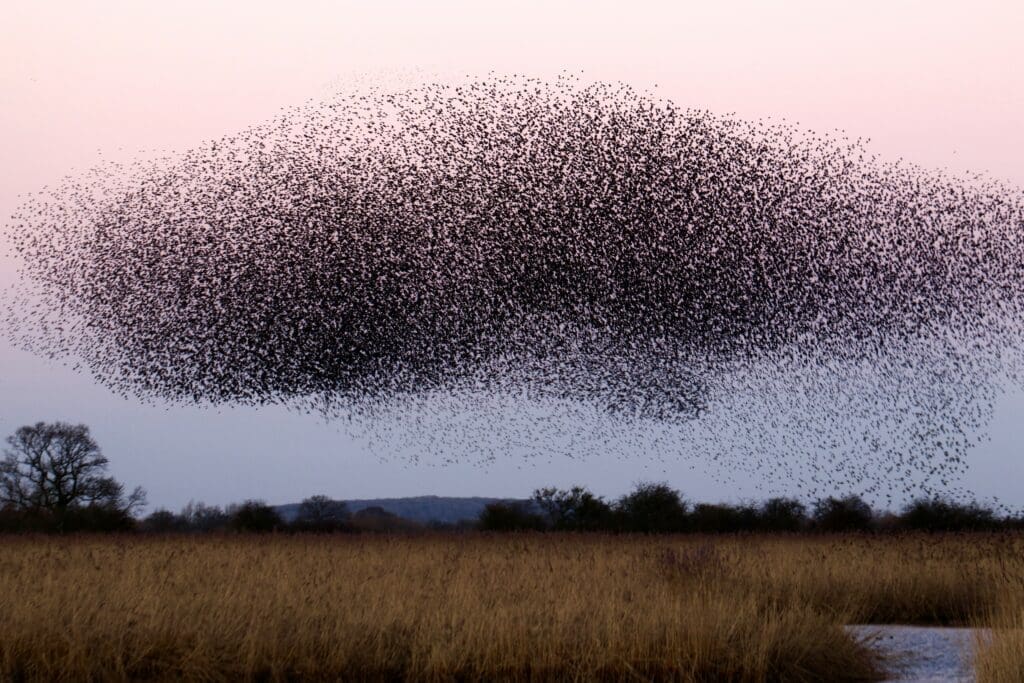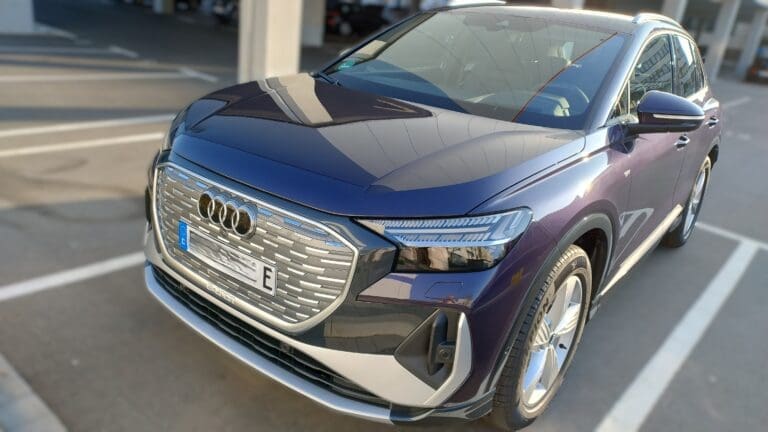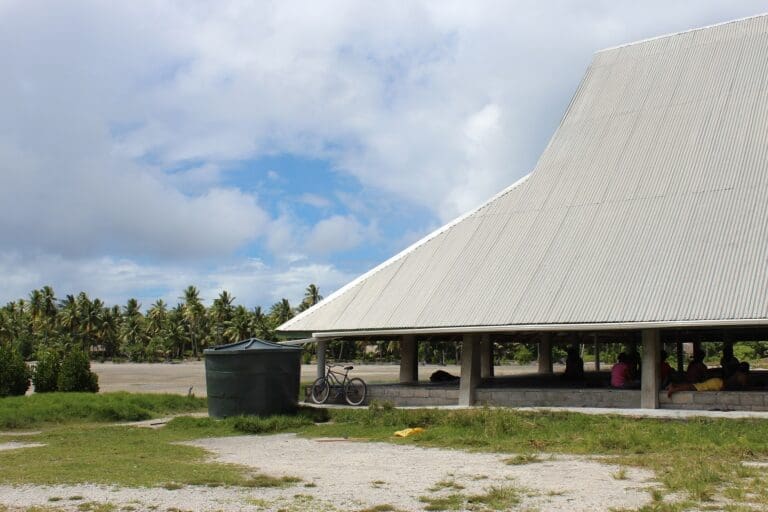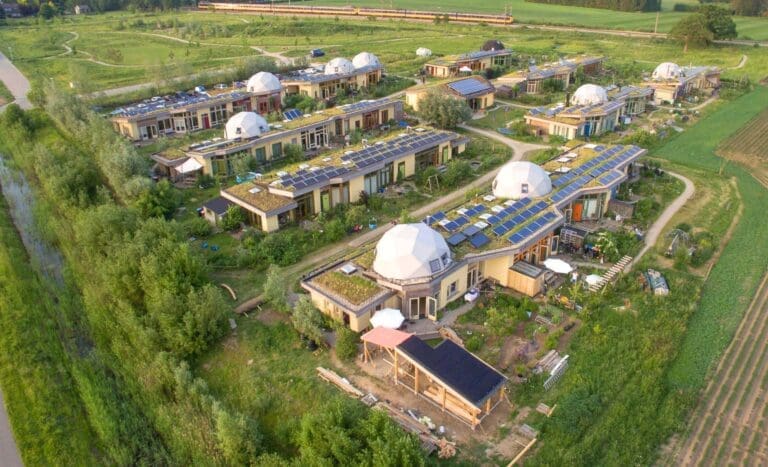Introduction
Swarm intelligence (SI) refers to the collective behavior of decentralized, self-organized systems, composed of relatively simple agents that interact locally with one another and their environment.[1] This concept, deeply rooted in natural systems, has grown into a vital field in artificial intelligence (AI), robotics, optimization, and complex systems management. It demonstrates how simplicity at the individual level can give rise to intelligent, adaptive behavior on a collective scale.
Historical Foundations[1]
Long before the term swarm intelligence was coined, foundational ideas were explored by early philosophers, naturalists, and scientists. In the 4th century BCE, Aristotle observed how flocks of birds and social insects appeared to act in coordinated ways, without central control. In his work Historia Animalium, he introduced notions that today are linked with emergence and self-organization.
In the 19th century, Charles Darwin further advanced the understanding of cooperation among social animals. In The Origin of Species, Darwin examined the instinctual and highly organized behavior of ants and bees, proposing that natural selection could produce intelligent group behavior without the need for top-down management. These studies laid the groundwork for our understanding of distributed biological intelligence.
The 20th century introduced cybernetics as a formal discipline—an interdisciplinary field exploring how systems, whether biological, mechanical, or computational, regulate themselves and respond to change. Norbert Wiener, the founding figure of cybernetics, demonstrated how both machines and living organisms could coordinate behavior through distributed signaling and contextual awareness. His insights laid the groundwork for understanding decentralized cooperation, a principle central to swarm intelligence.
Later, Heinz von Foerster, emphasized the role of self-organization in intelligent systems. He proposed that systems could maintain coherence and adapt through local interaction and internal feedback loops—principles now central to swarm-based approaches in AI and robotics.

Modern Milestones in Swarm Intelligence
- 1989: The term “swarm intelligence” was first introduced by Gerardo Beni and Jing Wang, in the context of cellular robotic systems. This marked the beginning of the formalization of SI as a field in computational science.
- 1992: Marco Dorigo developed the Ant Colony Optimization (ACO) algorithm,[2] modeled on the foraging patterns of ants, to solve complex pathfinding and optimization problems
- 1995: James Kennedy and Russell Eberhart introduced Particle Swarm Optimization (PSO),[2] inspired by social behavior in bird flocking and fish schooling
- 2004: In the EU-funded SWARM-BOTS project robots physically linked together to form bridges or climb terrain—precursors to morphing space rovers and search-and-rescue robots[3][4]
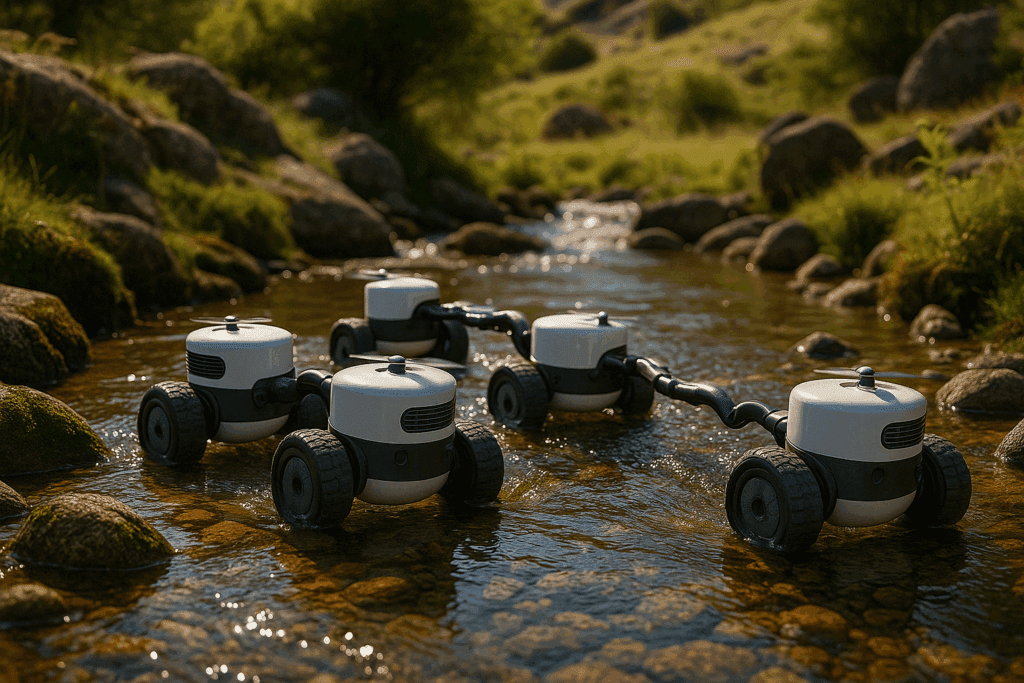
How Swarm Intelligence Works[1][2]
Swarm intelligence systems rely on simple agents (e.g., drones, robots, Internet of Things (IoT) devices, network nodes, birds, fish, etc.) that follow a set of local rules. These agents do not require global knowledge or a central leader. Through local interactions, collective patterns or solutions emerge.
Key characteristics:
- Decentralization – No central control; decisions arise from the bottom up
- Self-organization – Patterns form spontaneously based on local interaction
- Robustness – The system is fault-tolerant and adaptable
- Scalability – SI systems grow efficiently, regardless of agent count
Quantifiable Achievements
Swarm intelligence has shown measurable impact across a range of industries by solving problems that are otherwise extremely difficult for traditional systems to handle. In one notable example, a 2016 Stanford study using the Swarm platform demonstrated that doctors collaborating through a swarm-based system diagnosed pneumonia from chest X-rays with 33% higher accuracy than those working individually.[5] In logistics, swarm algorithms have significantly improved complex route planning scenarios such as the classic Traveling Salesman Problem[6], enabling more efficient movement of goods in global supply chains. Similarly, in distributed computing systems, networks applying SI-based routing methods based on the so called Firefly Algorithm have achieved 10-20% better load balancing and resource utilization compared to conventional approaches, resulting in more reliable and adaptive connectivity.[7]

These kinds of results highlight how swarm intelligence thrives in areas where optimization, adaptability, and decentralization are key. In robotics, SI is used to coordinate fleets of autonomous systems—whether drones mapping a disaster zone, robots managing dynamic warehouse environments, or underwater vehicles exploring vast ocean terrain. In AI and data science, SI principles help cluster large datasets, extract patterns, and select features more efficiently, enhancing the learning capabilities of intelligent systems.
Taken together, these advances show that swarm intelligence is not just a theoretical model. It’s a practical tool reshaping how we solve complex, real-world problems.
Market and Industry Impact
In 2023, the global market for swarm intelligence was valued at $35.2 million and is expected to grow to $306 million by 2030 at a CAGR of 38.4%.[8] Major adopters include defense, energy, logistics, and smart manufacturing sectors. Companies such as Amazon Robotics (USA),[9] Thales Group (France),[10] and Hitachi[11] (Japan), alongside government research agencies like DARPA[12] are actively researching and deploying SI-driven systems.
Fascinating Swarm Intelligence Trivia
- Starlings’ Murmurations: Each bird reacts to just seven neighbors, yet entire flocks shift in unison—an inspiration for drone swarm coordination and satellite formation flying[13]
- Fish Schools: Local interactions allow entire schools to evade predators effectively—for example, by forming a tightly packed swarm (see image below), instantly shifting direction, or scattering in synchrony to confuse and escape the predator. Military drone swarms use similar distributed threat avoidance strategies.
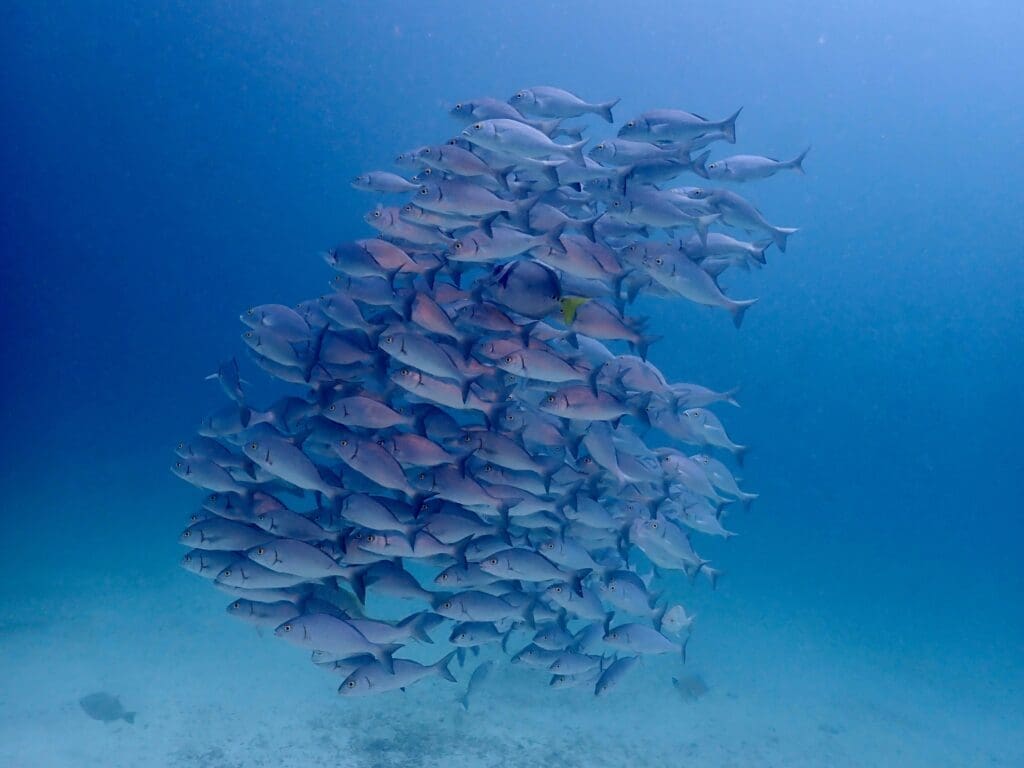
- Hollywood & Games: Massive digital crowds in The Lord of the Rings[14] and World War Z[15] were animated using SI logic. Real-time strategy games like StarCraft simulate coordinated enemy behavior using the same principles.[16] In Star Trek: The Next Generation, the Borg collective functions as a decentralized, hive-mind species where individual drones act as part of a larger, interconnected system.
Swarm Intelligence in the Age of Artificial Intelligence
In recent years, the distinction between SI and broader multi-agent AI has begun to blur. As AI systems grow more autonomous and distributed—especially in fields like robotics, defense, and smart infrastructure, not to mention the billions of Internet of Things (IoT) devices used worldwide—the collaborative dynamics once exclusive to swarm intelligence are increasingly integrated into multi-agent frameworks. This convergence reflects a shift from biologically inspired models to more hybrid, mission-driven systems that blend swarm principles with advanced learning and decision-making.
The interdisciplinary nature of SI—which draws from biology, sociology, computer science, and mathematics—may also present challenges in both research and practical application. However, this is precisely where technology is now heading: toward interdisciplinary approaches and the ability to connect insights across boundaries in order to offer seamless, end-to-end solutions to address today’s challenges.
Swarm intelligence remains a valuable and relevant area of research, with strong potential for innovative applications in fields such as robotics, sociology, and ecology—likely now under the broader umbrella of AI.
No Masters, Just Movement: Swarm Intelligence and the Decentralized Spirit of Solarpunk
SI also strongly resonates with Solarpunk ideals of a sustainable, decentralized, and ecologically harmonious world. Like the Solarpunk ethos, SI is grounded in cooperation, adaptability, and systems thinking. Whether it is distributed networks monitoring ecosystems, or self-organizing agents optimizing energy grids and data routing, swarm intelligence embodies the resilient, decentralized logic envisioned by the Solarpunk framework.

Conclusion
Swarm intelligence proves that complex, adaptive, and intelligent behavior can emerge from the cooperation of simple agents—without central control. As we stand on the cusp of an AI-driven era, SI offers scalable, resilient, and decentralized models for solving today’s most intricate challenges, from logistics and healthcare to robotics and smart infrastructure.
Sources
[1] https://en.wikipedia.org/wiki/Swarm_intelligence
[2] https://www.vationventures.com/glossary/swarm-intelligence-definition-explanation-and-use-cases
[3] Swarms of self-assembling artefacts | SWARM-BOTS | Projekt | Results | FP5 | CORDIS | European Commission
[4] https://arquivo.pt/wayback/20160516020049/http://www.swarm-bots.org/
[5] https://unanimous.ai/stanford-radiology/
[6] https://en.wikipedia.org/wiki/Travelling_salesman_problem
[7] https://journals.indexcopernicus.com/api/file/viewByFileId/2077181
[8] https://www.grandviewresearch.com/industry-analysis/swarm-intelligence-market-report
[9] https://www.amazon.science/research-awards/success-stories/swarm-robotics-radhika-nagpal-schooling-robots-to-behave-like-fish
[10] https://www.thalesgroup.com/en/worldwide/defence-and-security/press_release/thales-demonstrates-its-capacity-deploy-drone-swarms/
[11] https://social-innovation.hitachi/en-us/case_studies/data-intelligence-tackles-climate-change/
[12] https://www.darpa.mil/research/programs/artificial-intelligence-reinforcements/
[13] https://journals.plos.org/ploscompbiol/article?id=10.1371/journal.pcbi.1002894
[14] https://www.wired.com/2002/12/digital-actors-in-rings-can-think/
[15] https://www.wired.com/2013/07/wwz-digital-zombies/
[16] https://www.researchgate.net/figure/Decentralised-unit-micromanagement-in-StarCraft-II-where-each-learning-agent-controls-an_fig1_324150894

